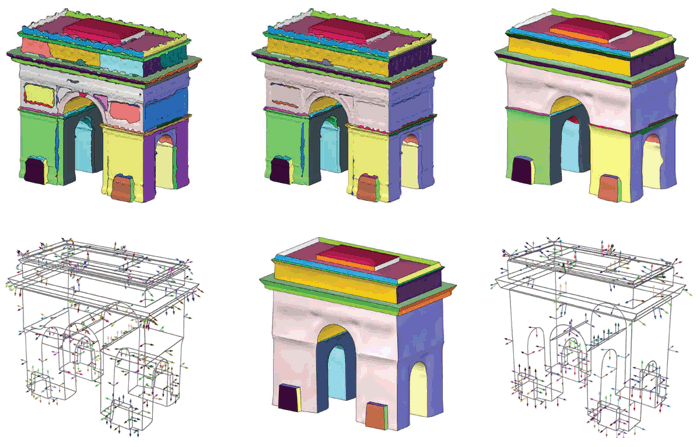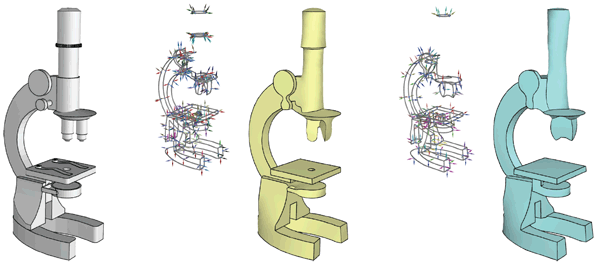Abstract:
Man-made objects are ubiquitous in the real world and in virtual
environments. While such objects can be very detailed, capturing
every small feature, they are often identified and characterized
by a small set of defining curves. Compact, abstracted shape descriptions
based on such curves are often visually more appealing
than the original models, which can appear to be visually cluttered.
We introduce a novel algorithm for abstracting three-dimensional
geometric models using characteristic curves or contours as building
blocks for the abstraction. Our method robustly handles models
with poor connectivity, including the extreme cases of polygon
soups, common in models of man-made objects taken from online
repositories. In our algorithm, we use a two-step procedure that first
approximates the input model using a manifold, closed envelope
surface and then extracts from it a hierarchical abstraction curve
network along with suitable normal information. The constructed
curve networks form a compact, yet powerful, representation for
the input shapes, retaining their key shape characteristics while discarding
minor details and irregularities.
Results:
 | |
(Left) Vectorization stages: VSA segmentation,
segmentation after boundary improvement, smooth approximation
geometry, extracted regularized curve network, surface after hierarchical
simplification, regularized simplified curve network.
|
|
| |
| (Right) Input model, processed segments, vectorized curve network,
and reconstructed abstraction. Zoom panels show section of
curve network, and normals along the curves. Connectivity-only
or virtual edges are marked in brown. For ease of visualization,
normals from same curve loops are marked in identical colors. |
|
 |
|
| |
| (Below) Result gallery showing various input models, extracted curve networks (with normals), and reconstructed abstractions. The
high-resolution abstractions are rendered in yellow, while the low-resolution ones are in blue.
|
|
|
| |
| (Right) Abstractions of a microscope model at high- and lowresolutions.
For such models with fine details, the abstraction results
are often subtle, while geometrically minor but semantically
significant parts can get suppressed by our purely geometric abstraction
procedure.
shadow images. |
|
 |
|
| |
| (Below-left) Fine topological features are easily combined by
our envelope construction stage. However, once such features are
extracted by a finer grid resolution, we have no easy method to remove
them, independent of their size. (Below-right) Some objects, perhaps
those less familiar to us, have no obvious natural abstraction.
|
 |
Bibtex:
@article{mzlsgm_abstraction_siga_09,
AUTHOR = "Ravish Mehra and Qingnan Zhou and Jeremy Long and Alla Sheffer and Amy Gooch and Niloy J. Mitra",
TITLE = "Abstraction of Man-Made Shapes",
JOURNAL = "{ACM} Transactions on Graphics",
VOLUME = "28",
NUMBER = "5",
PAGES = "\#137, 1-10",
YEAR = "2009",
}


